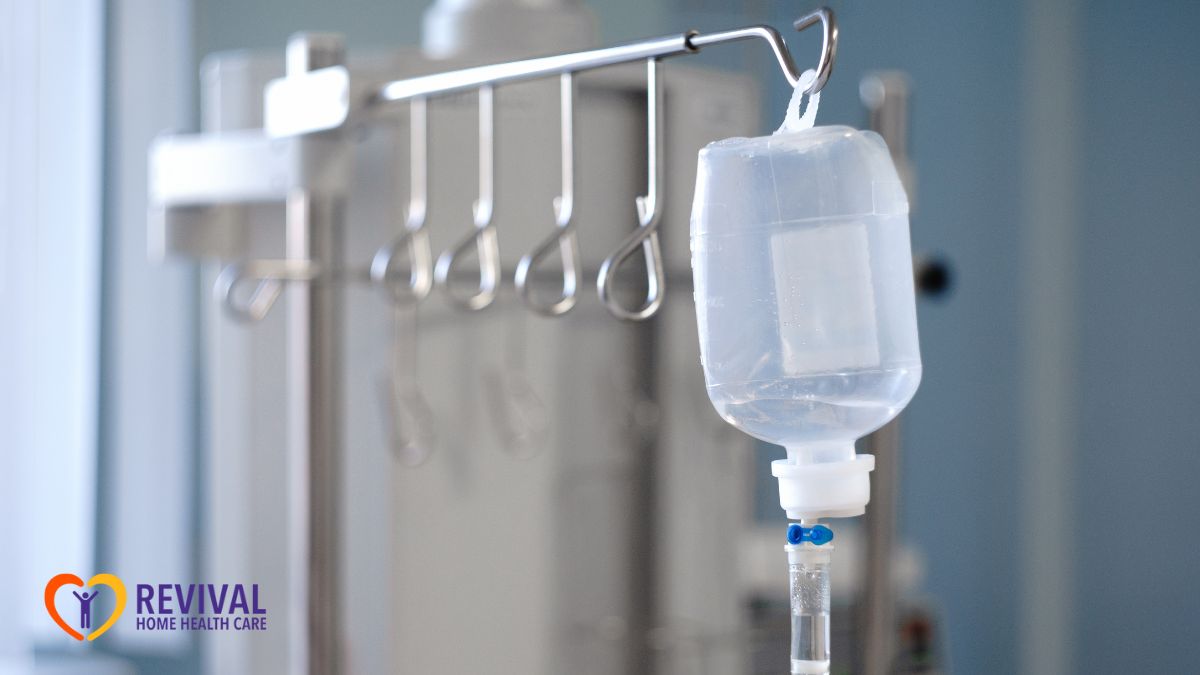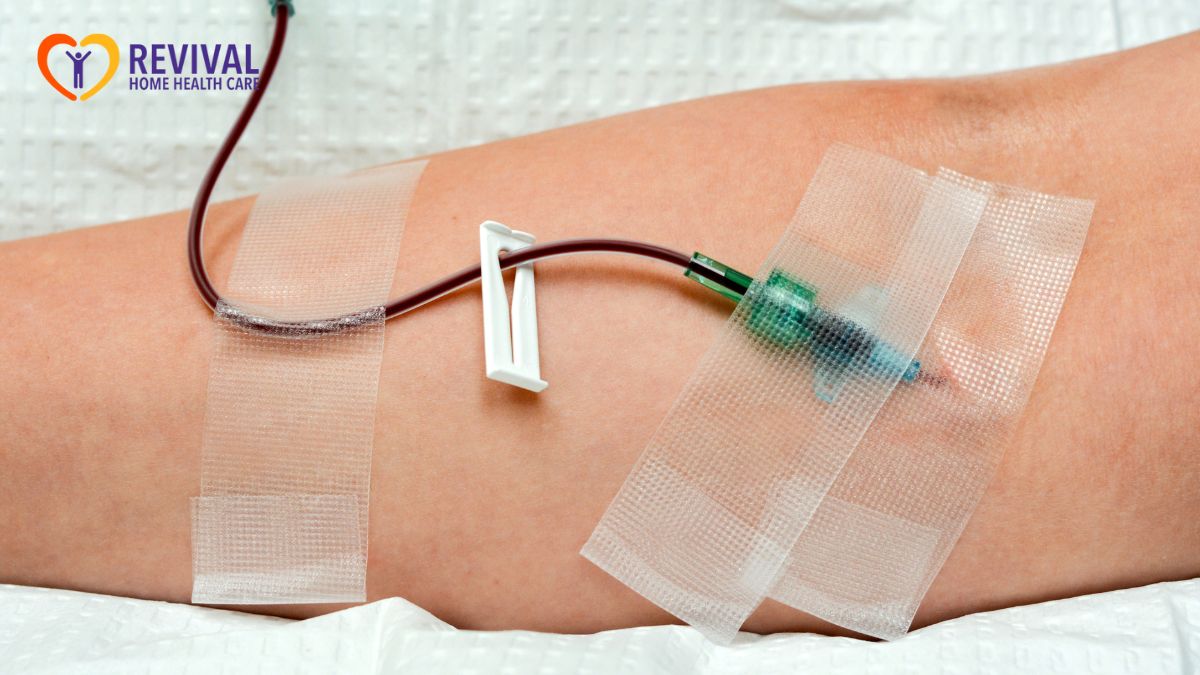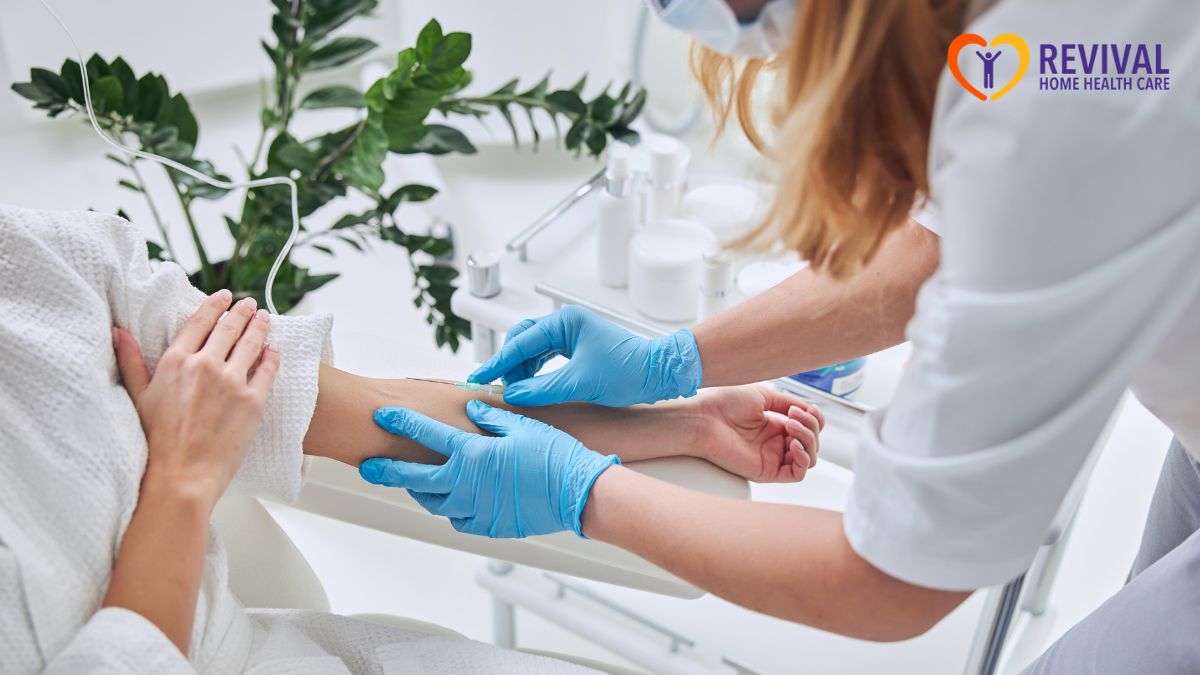Key Points:
- The main difference between ports and PICCs is placement and maintenance.
- Ports sit under the skin, stay hidden, and last months to years with lower infection rates but need needle access each use.
- PICCs exit the arm, offer ready access without needles, and last weeks to months but carry higher clot and infection risks.
Port vs PICC lines differ in placement, care, and use. A port is implanted under the skin and suited for long-term therapy, while a PICC is a tube in the arm used for weeks or months. Both provide safe IV access, but ports carry a lower infection risk and PICCs allow easier short-term access.
Many may wonder, “Is a PICC line the same as a port?” These devices serve the same purpose, but day-to-day living feels different. Skin care, shower routines, and activity levels factor into the choice. Read on to learn more.
 Port vs PICC: How the Devices Work
Port vs PICC: How the Devices Work
When it comes to port vs PICC lines, both give reliable IV access for treatments like chemo, antibiotics, or nutrition. A port sits fully under the skin on the chest with a small reservoir accessed by a special needle. A PICC is a thin tube inserted in the upper arm with an external hub.
Both end in a large vein near the heart to deliver medications that can irritate smaller veins. Home care teams teach safe use, flushing, and dressing care, led by skilled nursing for line management. Knowing the differences helps patients and families choose what fits best.
Placement and Use
- A port is implanted under the skin in a short procedure.
- A PICC is placed in a vein in the upper arm at the bedside or in radiology.
- Both need X-ray or tip confirmation.
- Both allow blood draws, hydration, and infusions often delivered through home infusion therapy.
Comfort and Care
- Ports show only a small bump under the skin.
- PICCs have visible tubing and a dressing site that needs regular changes.
- Showering is easier with a healed port because there is no outside tubing.
- PICCs require moisture protection during showers and daily checks, following at-home wound care steps for clean dressings.
Access and Duration
- Ports are accessed with a special needle at each infusion.
- PICCs connect directly at the hub and are always ready.
- Ports are often chosen for months or years of intermittent therapy.
- PICCs are used for weeks or months of frequent therapy or when surgery is avoided.
Both ports and PICCs provide safe access for treatment, but the right choice depends on comfort, care needs, and how long therapy is expected to last.
Port vs PICC: Safety, Complications, and Real-World Numbers
The safety of using the devices involves risks like infection, clotting, and device problems. Studies show clear differences that guide decision-making. In one trial, 16 of 201 patients with PICCs developed deep vein thrombosis, compared with 2 of 198 patients with ports, a tenfold higher risk for PICCs.
Infection is another concern, especially for chemotherapy. Research found PICCs carried a bloodstream infection rate of 10.0 per 1000 catheter-days, showing the need for careful cleaning and monitoring. Ports, when well maintained, show much lower infection rates. A 2025 review reported 0.45 infections per 1000 device-days for ports, highlighting the protection of a fully implanted device between infusions.
What this means at home:
- PICCs can be more clot-prone, especially in cancer treatment. Prompt reporting of arm swelling, new pain, or color change helps catch clots early.
- Ports can show fewer infections over long spans between infusions, but needle access days still need strict sterile technique.
- Both devices benefit from chlorhexidine skin prep and securement strategies that family caregivers in home infusion therapy use day to day.
PICC vs Port for Chemo: Lifestyle, Comfort, and Access
Choosing between a PICC vs port for chemo often depends on how treatment fits daily life. Weekly infusions may suit a PICC because it stays ready without extra needle sticks, while a port may be better for longer breaks since it sits under the skin and stays out of the way.
Comfort is another factor. Ports reduce snag risk and allow easier movement once healed, supported by physical therapy at home when mobility needs grow. PICCs need extra care with sleeves, handling around the hub, and protection during chores. Ports still require attention on infusion days, with a secure needle and dressing.
Travel adds more considerations, and telehealth services can handle routine check-ins between infusion days. PICCs call for kits with dressing supplies and saline, while ports need needles and sterile gear only on infusion days. Both devices require backup supplies, a device card, and guidance on airport checks, hydration, and early warning signs.
At-home comfort checklist:
- Check for tugging or pulling during sleep and use soft wraps for PICC lines.
- Plan loose tops for port access days to make needle placement easier.
- Keep a small go-bag with gloves, alcohol pads, flush syringes, and emergency contacts.
Daily Care Routines: Ports and PICCs at Home
Port and PICC home care focuses on clean hands, flushing, and dressings. Washing hands before touching the line lowers infection risk, while clean surfaces, new gloves, and no-touch methods keep germs away. Nurses give families a clear step-by-step routine based on the device, reflecting in-home nursing care for ports and PICCs.
Flushing schedules differ between devices. Ports that are not in use may only need flushing every 12 weeks in many programs, depending on policy and device instructions. Current standards support longer intervals with 10 mL saline, but plans are tailored for each patient.
PICCs need daily flushes as ordered, along with weekly dressing and cap changes. Dressings should be replaced sooner if they loosen, get wet, or show drainage, and gauze requires more frequent changes than transparent film.
Core home steps for both devices:
- Perform hand hygiene before any line contact and use sterile technique during access, dressing changes, and cap changes.
- Inspect skin for redness, drainage, tenderness, or swelling every day, and use the same cues nurses use to monitor wound healing.
- Keep tubing and caps closed when not in use and avoid submerging the site in water.
Port vs PICC Line: Pros and Cons at a Glance
Port vs PICC benefits and tradeoffs help set expectations for home life and clinic visits. Families can match device traits to routine, comfort, and clinical needs.
Ports: Pros
- Lower exposure of the entry site between infusions because the device is fully implanted.
- Simpler shower routine when not accessed.
- Longer potential lifespan for long-term therapy plans.
Ports: Cons
- Needle access needed for each infusion day.
- Minor procedure required for placement and removal.
- Pocket discomfort can occur after heavy activity or during early healing.
PICCs: Pros
- No needle sticks during active treatment days.
- Bedside placement without a surgical pocket.
- Immediate access for frequent infusions and blood draws.
PICCs: Cons
- Higher risk of symptomatic DVT compared with ports in cancer settings.
- External tubing needs consistent weekly dressing changes and daily care.
- Shower protection and activity adjustments required to prevent line pulls.
 PICC Versus Port: Red-Flag Symptoms and When to Call
PICC Versus Port: Red-Flag Symptoms and When to Call
At home, port and PICC safety improves when families know the warning signs and who to call. Redness near the line, fever, or trouble flushing should be reported quickly to the care team. Early action helps prevent complications and ER visits.
Call the team urgently for:
- Fever or chills after a line use or at rest
- New arm or neck swelling, tingling, color change, or pain near a PICC
- Increasing redness, warmth, or drainage at a port access site or PICC dressing
- Resistance when flushing or alarms from the pump that do not resolve
- Wet, loose, or soiled dressings that cannot be secured at home.
How to Decide With Your Clinician
Choosing between a port and a PICC means weighing the treatment plan, clot risk, and daily routine. The right device depends on how long therapy lasts and how it fits into everyday life.
- Cancer regimens with months between cycles often fit best with a port.
- Antibiotic courses that last weeks often fit best with a PICC.
- Prior clot history, vein health, and type of work also affect the choice.
- Comfort with needle access and preference for a hidden line matter too.
Families often search terms like “PICC versus port,” “Mediport vs PICC,” or “port a cath vs PICC.” Many also ask if a PICC line is the same as a port when care begins at home. Clear teaching during the first visit helps answer these questions and reduces stress on treatment days.
In the end, a port or PICC should match both the medical plan and the patient’s lifestyle, with guidance from the care team.
Practical Care Tips: Keep Either Device Working Well
The longevity of Port and PICC devices improves with small daily habits. Hydration supports veins. Gentle movement reduces stiffness and encourages circulation, and home-based therapy builds strength and balance during recovery. Good sleep and clean routines lower infection exposure. A tidy supply area and labeled syringes reduce errors.
Simple tips to use today:
- Set weekly calendar reminders for dressing checks and cap changes.
- Keep spare sterile caps, flushes, and alcohol pads in a labeled pouch.
- Use a mirror or phone camera to inspect hard-to-see areas near the device.
- Ask for a written plan for flush volumes, frequency, and lock solutions.
- Confirm the local plan for port maintenance when idle, including whether the team uses normal saline only or heparin locks.
Frequently Asked Questions
Why is a port better for chemo?
A port is better for chemo because it provides long-term central access with fewer infections and clots than PICCs, avoids repeated needle sticks, and safely delivers vesicant drugs. Ports have no external tubing, making daily life easier, with normal showering and activity possible between treatments.
Do you need a PICC line or port for pots?
Most people with POTS do not need a PICC line or port. Standard care relies on fluids and salt by mouth, compression, exercise, and medication. IV fluids may be used briefly in emergencies, but long-term central lines increase clot and infection risk and are discouraged unless other measures fail.
Is PICC a port?
No. A PICC is a peripherally inserted central catheter that enters through the arm and has external tubing needing dressings and frequent flushes, used for weeks to months. A port is implanted under the skin on the chest, accessed by needle when needed, and can stay for months to years without outside tubing.
Get Expert Support for Ports and PICCs at Home
Managing a port or PICC line at home can feel overwhelming without the right guidance. Access to professional home health care services in New York ensures that dressings are changed correctly, complications are spotted early, and treatments continue without interruption.
Revival Home Health Care provides coordinated support that includes medication setups, port or PICC care education, and ongoing check-ins tailored to your treatment plan. Call today to schedule a visit or message us to review your current device care plan and set clear next steps for your home routine.


 75 Vanderbilt Ave Staten Island, NY 10304
75 Vanderbilt Ave Staten Island, NY 10304 info@revivalhhc.org
info@revivalhhc.org 718.629.1000
718.629.1000